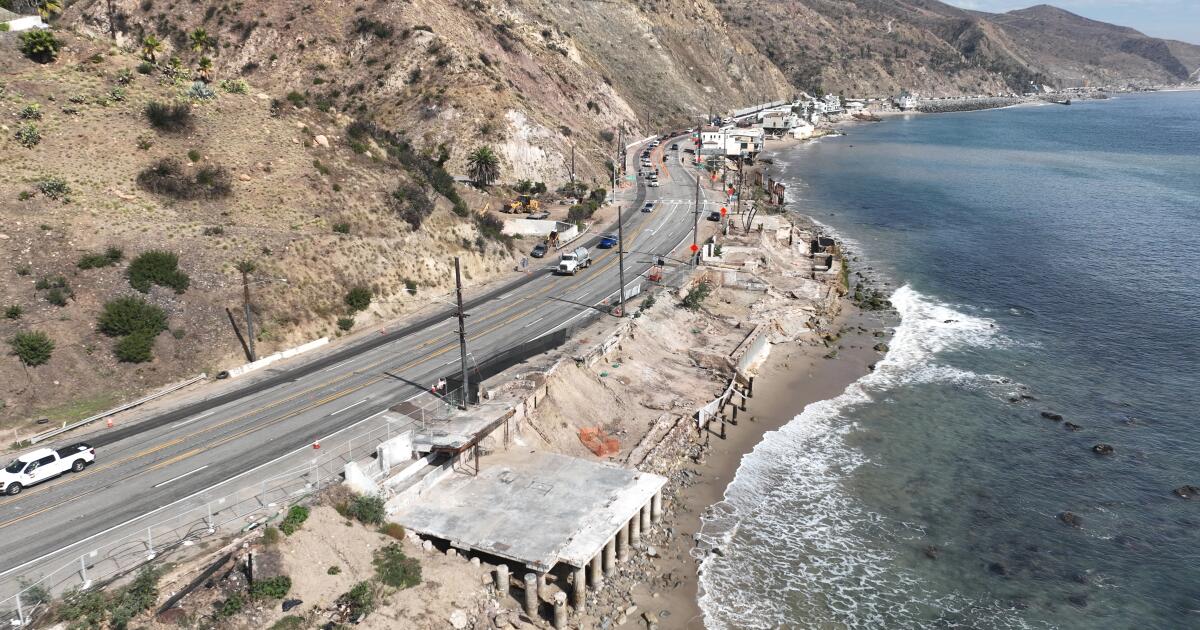Book Review
The Age of Solitude: Essays
By Laura Marris
Graywolf Press: 208 pages, $18
If you purchase books linked on our site, The Times may earn a commission from Bookshop.org, whose fees support independent bookstores.
Earlier this year, a committee of the International Union of Geological Sciences nay Earth’s geological history is reinforced by the addition of the Anthropocene, the human epoch. According to these scholars, we are still in the Holocene, an era that began 11,700 years ago, when the ice sheets melted. Scientists in other fields might disagree, pointing to human-caused planetary changes from before the mid-20th century; some believe humans have created a sixth mass extinction.
The late evolutionary biologist E.O. Wilson warned against continuing species loss and coined a different term for our time: the Eremocene, The Age of Loneliness. Laura Marris’ debut, “The Age of Loneliness,” is a series of nine meditations on this time, framed by Wilson’s admonition. In her view, “loneliness deserves to be heard because it yearns for reconnection, a pain that illuminates its antidote, a symptom that yearns for its cure.”
The collection begins with “Lost Lake,” which puts readers in a position to consider loneliness from both a personal and ecological perspective. In the first sentence, Mariss recalls asking her father, a birdwatcher, why a saltwater lake in Westwoods, Connecticut, would be called “lost” when the water could be seen. He tells her that settlers gave it that name while surveying the area, not realizing that the lake was connected by a canal to a nearby marsh. The ebb and flow of the tide could cause the lake to completely recede. When surveyors returned at low tide, they believed they had lost the lake.
The Lost Lake prepares us for the silent disappearances chronicled throughout the book. In some cases, these are natural phenomena, species, or conditions that our society doesn’t know have been lost, and yet we feel more alone for these untold disappearances. Marris writes, “I’m beginning to understand that absence itself might be a reference point. That sometimes, to know where you are, you have to orient yourself by what’s not there.” It is the absence of her father, which crops up again and again, that produces the strongest sense of personal loss in the collection.
One of the book’s most beautiful qualities is its unusual depiction of interior landscapes as well as ecological landscapes. Inside and outside are inextricably linked, Marris suggests; our actions shape what remains of the environment, but ecological absences also shape our psyche and our body. The earth is in us. Marris draws on a quote from nature writer Robert MacFarlane: “We are partly mineral beings too—our teeth are reefs, our bones are stones—and there is a geology of the body as well as of the earth.”
“It’s easy to associate oil and stone with the primordial,” he explains, “but it’s not so easy to think, in our intimacy with roads, about the long time scales of the Earth, a verticality that travel cannot overcome.”
A haunting reflection, “Extremotolerance” begins with a discussion of rare species that thrive in extremes that might be fatal to others, but moves on to an “extremotoler”: an eight-legged micro-animal, the tardigrade, or water bear, that lives in both moderate and harsh climates. Marris tells us that a lunar module carrying a library of data, DNA samples, and dormant tardigrades in resin crashed on the moon, the cargo being dumped on the surface. The Arch Mission Foundation had sent the library to ensure that our time would not be forgotten by whoever comes after humans are gone; the organization aspired to back up Earth. Marris likens the act to planting a flag, a colonial assertion. She asks if there is anything humans can’t ruin, but furthers the thought with “At the scale of an ice age, we wouldn’t really know what ruin means.”
As in the Lost Lake essay and later pieces, Mariss includes personal details that open up the piece and make it more intimate. She recounts that her boyfriend, Matt, made an artwork titled “Tardigotchi,” which consists of an orb-shaped enclosure, housing a single tardigrade on one side and, on the other, an avatar to feed. This allusion to the virtual Tamagotchi leads to scrutiny of other forms of technology, as Mariss sketches connections between technology and automation and the Eremocene. Marris repeatedly reminds us, “Because it can be monetized and invested in, autonomy is the neoliberal cousin of solitude.”
Self-driving cars and planes are part of this study. For example, “Safer Skies for All Who Fly” looks at bird strikes, collisions between birds in the air and moving aircraft. “Cancerine” examines our assessment of the toughness of horseshoe crabs or “soldier crabs” in the face of human capture and a damaged ecosystem.
In an article titled “The Echo,” the story of the chemical dumping in Love Canal at Niagara Falls is told. In this article, referring to the image of Lost Lake, Marris suggests that knowledge about groundwater contamination has diminished; it is unclear whether there are still hidden toxic materials. While at the park, she reluctantly interrupts a joyous moment when her friends discover cherries growing by revealing to them the information she has about the story. Hopefully, they ask Marris if it would be safe to eat a few cherries. She is unsure.
Epistemological uncertainty also drives the final contemplation, “Shadow Country.” Marris describes the loss of the language of nature her father taught her on their walks, and the resulting absence, and also what she didn’t know about him, such as whether she had kept a list of the birds she had seen. Her memories of him have become blurred with the passage of time, and this only underscores her interest in loss as a destabilizer of physical and psychological landscapes. Personal memories become their own kind of lost lakes. Overall, though, Marris takes the still radical step of marginalizing her personal history as just one small part of a vast landscape of living things. Like poet and environmentalist Gary Snyder, only more comfortable with lament than adventure, the author attempts to shed a man-made barrier between herself and nature. At times I longed for more forceful movements in Marris’s watercolours, but hers is an undeniably profound elucidation of losses, some of which are tragedies we have brought about by our hubris and aggressive industry, whether or not we have created a new geological epoch out of it. Her delicate, restrained tone is certainly intended. “For years I wanted my thinking to be like a drop of oil falling into water: it touches the surface and a skin of interconnected circles proliferates,” she writes.
His approach is opposed to the colonial, the destructive, the industrial. “The Age of Solitude” raises a reflection according to which we too regret the sometimes invisible losses that have been left to us.
Anita Felicelli is a novelist and critic who served on the board of directors of the National Book Critics Circle from 2021 to24.











